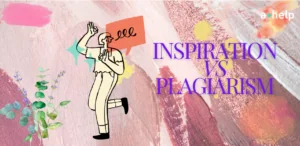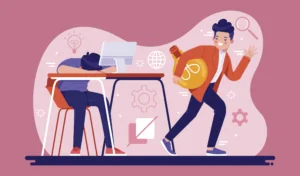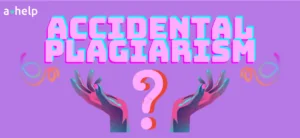Academic integrity is the cornerstone of a quality education, ensuring that the work students submit is genuinely their own. However, with the vast amount of information available online, plagiarism has become a common issue in educational settings. Teachers play a crucial role in maintaining academic honesty by detecting and addressing plagiarism in student assignments. They use a variety of methods to check for copied or improperly cited work, ranging from traditional manual checks to advanced technological tools.

✅ AI Essay Writer ✅ AI Detector ✅ Plagchecker ✅ Paraphraser
✅ Summarizer ✅ Citation Generator
Traditional Methods of Plagiarism Detection
In the fight against plagiarism, teachers often rely on traditional methods to spot copied work. One common approach is manual checks, where teachers look closely at students’ writing.
| Manual checking is when teachers closely examine students’ work for signs of plagiarism, such as changes in writing style, unusual vocabulary, or unexpected sources. |
They watch for signs like sudden changes in writing style, vocabulary that doesn’t match the student’s usual level, or references to sources that seem out of place. These clues can hint that the work might not be original. Teachers might also notice if a student’s work suddenly improves without explanation, which could be a sign of plagiarism.
Another way teachers check for plagiarism is through peer review.
| Peer review involves students reviewing each other’s work to identify any copied content or similarities to known sources, which they then report to the teacher for further investigation. |
Peer review can be helpful because students might notice if a classmate’s work sounds too much like a source they’ve seen before. They can then flag this for the teacher to take a closer look. Both manual checks and peer review are important tools in ensuring that students’ work is their own. By using these methods, teachers can help maintain academic integrity and teach students the value of original work.
Tools for Plagiarism Detection
In addition to traditional methods, teachers often use technological tools to detect plagiarism. One popular option is plagiarism detection software, like AcademicHelp Plagiarism Checker to know what is the percentage limit for plagiarism. These tools scan students’ work and compare it to a vast database of academic papers, books, and online content. If the software finds matching text, it flags it as potential plagiarism. This helps teachers quickly identify copied work and take appropriate action.
Google Search is another tool teachers use to check for plagiarism. By entering suspicious phrases or sentences into the search engine, teachers can find web pages with identical or very similar content. This method is especially useful for uncovering plagiarism from online sources. While it might not catch everything, it’s a quick and easy way to start investigating possible plagiarism. Together, plagiarism detection software and search engines provide teachers with powerful tools to maintain academic integrity in their classrooms.
How to Check for Plagiarism Effectively?
For effective plagiarism detection, teachers often combine traditional and technological methods. This mixed approach ensures a thorough check of students’ work. Traditional methods, like manual checking and peer review, allow teachers to spot inconsistencies and familiarize themselves with students’ writing styles. Technological tools, such as plagiarism detection software and search engines, help scan a vast range of sources quickly for any matches.
However, the role of teacher intuition and experience should not be underestimated. Teachers can often sense when something is off in a student’s work, based on their knowledge of the student’s abilities and previous submissions. This gut feeling can prompt a closer examination, which leads to the discovery of plagiarism that might not be immediately obvious. By using a combination of methods, teachers can cover more ground and increase the chances of catching plagiarism. This approach makes sure that students’ work is held to high standards of academic integrity and maintain fairness and honesty in the educational process.
Preventing Plagiarism for Teachers
Preventing plagiarism is key to keeping schools honest. Teachers have a big role in showing students how to do their work honestly by teaching them how to give credit to others’ ideas and set clear rules. By helping students understand how to cite sources correctly, teachers can guide them in creating work that truly shows what they’ve learned.
| 👎 Don’ts | 👍 Dos |
|---|---|
| Ignore the importance of citations. | Teach proper citation techniques. |
| Be vague about what constitutes plagiarism. | Set clear expectations for assignments. |
| Use generic assignments that can be easily found online. | Design unique and engaging assignments. |
| Encourage group work without clear guidelines on individual contributions. | Encourage collaboration while emphasizing individual accountability. |
| Rely solely on plagiarism detection software without discussing its findings. | Use plagiarism detection software as a teaching tool. |
By using good strategies to stop plagiarism, teachers can make a classroom where originality and truthfulness are valued. Teaching students about giving proper credit and having clear rules for work can really cut down on plagiarism.
All in All
In conclusion, teachers have a range of strategies at their disposal for checking plagiarism, from observing writing inconsistencies to employing sophisticated software. These methods help ensure that students’ work reflects their own understanding and effort, which is essential for their academic and professional growth. As students, it’s important to recognize the value of originality and the role of teachers in upholding academic integrity. By doing so, we contribute to a fair and honest educational environment.
FAQ
Follow us on Reddit for more insights and updates.





Comments (0)
Welcome to A*Help comments!
We’re all about debate and discussion at A*Help.
We value the diverse opinions of users, so you may find points of view that you don’t agree with. And that’s cool. However, there are certain things we’re not OK with: attempts to manipulate our data in any way, for example, or the posting of discriminative, offensive, hateful, or disparaging material.